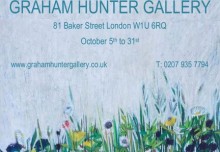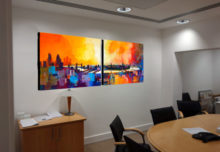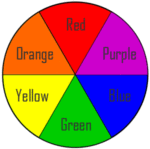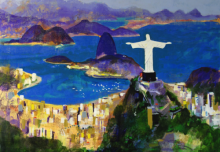LANDSCAPE, PORTRAIT, or SQUARE are the usual choices of orientation when you start to paint a picture.
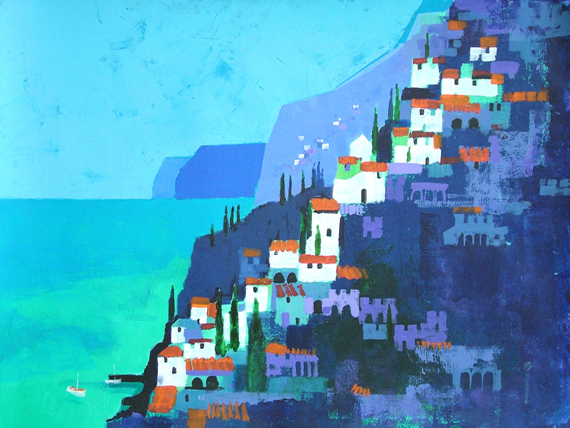
‘AMALFI’ by Colin Ruffell [OAR100132]
Landscape.
Obviously ‘landscape’ is called that because that is the normal format for everyday views that are wider than high. Our eyes are set apart side by side and not one above the other at a ratio of roughly 2.5 units wide to 1 unit high. So that is our normal visual field. Our brains understand that ratio and can read the whole picture in one go if it is two point five by one.
We evolved our visual skills over thousands of years where seeing the landscape was crucial to our survival. We can see in one glance a vista that might contain other animals that we want to hunt or that might want to hunt us.
The natural world is split into above or below the horizon. The horizon is usually a lateral feature. It is at eye level if the land or sea ahead is flat, we can tell if the land goes up or down. Balance, gravity, physics and geology have created our visual process. Landscape is natural.
Portrait.
‘Portrait’ format is the other way round. It is taller than wide, height over width, which is not natural. But maybe it is! As we evolved we developed multi-functioning brains. Humans are a social animal, living in groups, with inter-reaction a crucial element in our survival. We really need to see and socialize with people who are taller than wide. So maybe we have a second sub-set of brain functions that understands this. We need to see and understand the whole person in one very swift instant. Maybe portrait format springs from a defence mechanism, or mating need, or pecking order recognition. Portrait is human inter-reaction.
Square.
And square is a hybrid format. It is neither naturally landscape or naturally portrait. It is mathematically unique. It appeals to another part of our mind. Square is not natural it is a mental phenomenon. It is abstract and appealing because it is more than natural. Or is it just a compromise?
When an artist chooses the format of their next new painting or print they will most likely know what they want to create. A landscape, seascape, or animal study will probably be in ‘landscape’ format. A portrait or flower study might be in ‘portrait’ format. An abstract might be a ‘square’ piece.
So far so good, my natural, human, or abstract analysis is fine here. But of course artists don’t make art to satisfy my ideas. Some paintings of people are in landscape format, especially nude studies, which is interesting. Some cityscapes look dramatic and really work well when they use portrait format. Abstract art comes in all shapes and sizes.
Just a thought!
But maybe there is more to this than first glance reveals. Perhaps the use of the art piece plays a part. Are the art patrons having an influence on the choice between landscape, portrait, or square?
A domestic or commercial space is usually wider than tall. That makes sense because it is practical to use inside space that way. The walls on our everyday interior space are wider than high. So art for domestic or office walls will fit easier in landscape format. But I know from my personal experience that there are good hanging walls in stairway spaces where the wall is often taller than wide. Also those alcove walls either side of the fireplace are narrow and tall. Here a portrait format looks good. So in the past I have painted tall pictures to go into these spaces. Not actual people portraits in my case but flowers or tall buildings.
Of course the patrons of the past were influential in a big way. Church art showing Christ on a cross and subjects like that are good for very tall interiors. That is why they are there.
The wealthy landowner class who commissioned portraits had big rooms with high ceilings so they could display family portraits easily. And they do seem to have indulged themselves in the portrait market.
Up to date.
Circular, oval, asymmetrical, or triangular artworks do exist. They are harder to do because artist’s materials come in landscape, portrait or square. So you have to make your own unusually shaped canvases, or waste chunks of paper. But artists are not deterred. There are no rules in the art game.
******************************************************

